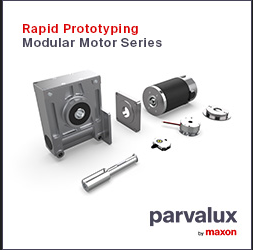How CLM Enhances PLM – And Why Smart Manufacturers Need Both
.jpg)
Manufacturers of configurable products face an ever-increasing demand for more customization. When you begin to offer customization, options and rules need to be defined at every step of the process. It's not just an engineering problem; it's also a logistics, operational, and commercial problem. However, all of these aspects are handled in different systems across various departments, making it challenging to manage and ensure alignment.
Navigating this landscape requires end-to-end visibility across sales, service, engineering and manufacturing to ensure alignment. Many organizations turn to a Product Lifecycle Management (PLM) solution to help, but this just isn’t enough to fully support the complete lifecycle. Enhancing PLM with a Configuration Lifecycle Management (CLM) approach enables a more holistic view.
The state of configurable manufacturing
Across the globe, the manufacturing landscape is being transformed by the increased demand for personalized and configurable products. Highly customizable products are complex due to the electronics, mechanics and increasingly varied software versions involved. Manufacturers must overcome this complexity to meet customer demand.
If they do not, the result will be inefficient processes, quality issues, and delays due to dispersed data and the lack of proper configuration technologies that can manage the vast range of potentially billions of possible product configurations or combinations. While PLM can help tackle this scenario, it’s just one piece of the puzzle.
PLM is absolutely a vital component of the manufacturing process. However, concentrating solely on this aspect of the broader product picture leaves a blind spot. The standard PLM view “belongs” to the engineering function, and it doesn’t always account for the sales point of view. What happens, then, is that manufacturers end up with a woefully incomplete view of their product offerings.
Bringing PLM and CLM together
PLM and CLM are distinct but complementary approaches. PLM focuses on the entire lifecycle of a product, from concept to design, manufacturing, service and disposal. It encompasses engineering data, CAD models, documentation, Bills of Materials (BOMs), change management and collaboration across departments. PLM supports innovation, product development and compliance.
While PLM manages product lifecycles, CLM manages the lifecycle of product configurations from what is being offered to what has been configured, sold, delivered and serviced. CLM provides an approach to manage customizable product options and rules end-to-end. It consolidates already-defined options and rules from existing systems into a common product model that is accessible to all. When synchronized back with each system, the common product model provides a reliable “shared source of truth” for end-to-end product options and rules.
How can these tools work together? PLM offers numerous benefits, but it tends to be engineering-specific. It doesn’t always consider the sales point of view, which means that, as noted previously, manufacturers wind up with a very incomplete picture of their product offerings.
The CLM approach enhances PLM’s value by linking engineering rules and commercial rules. This link enables manufacturers to see all possible configurations for their products. This approach consolidates product configuration data in a common model, enabling a single point of consumption for multiple systems and users.
A CLM approach can validate a combined model by ensuring that data from engineering (like CAD or PLM systems) and business systems (ERP, CRM, etc.) are aligned and synchronized across the entire product lifecycle. From the engineering side, the CLM approach validates that the combined model accurately reflects design intent, constraints and rules, ensuring feasibility and compliance with technical specifications. From the business systems side, this approach ensures that product configurations are valid for manufacturing, sales and service, integrating rules from pricing, supply chain and market-specific requirements. This validation reduces errors, accelerates time to market and ensures consistent, correct configurations.
Manufacturers can also use CLM to ensure that a BOM is complete, consistent and aligned across engineering, manufacturing and commercial systems. CLM can compare the engineering BOM (eBOM) with the manufacturing BOM (mBOM) and sales BOM (sBOM) to detect discrepancies, missing components or invalid configurations early in the process. It enforces product rules, dependencies and regional constraints, ensuring that only valid, buildable configurations are passed downstream. This reduces costly errors and ensures that all teams are working from a single source of truth.
In essence, CLM is the way to bridge the divide between engineering and other functions.
Paving the way for future success
The current PLM approach is designed for the mass manufacturing of standard products but is sometimes ill-equipped to handle customization. By integrating PLM with a CLM approach, engineers can ensure consistency at both the product and product configuration levels. There are four main benefits or value propositions of this dual approach:
- The sales function is empowered to create market-specific configurations without engineering support.
- The engineering function gains visibility into customer preferences, preventing over-engineering.
- The operational team can handle orders with confidence, knowing that only valid and deliverable options were presented to the customer.
- The service team now knows exactly the configuration delivered to the customer, making maintenance and upgrades much more efficient.
Other benefits include delivering better customer experiences, improving internal efficiency and unlocking real business value. Additionally, domain experts continue to work in their familiar and/or preferred systems to define the optimal options and rules. The only difference is that a shared source of truth is introduced, which enables the validation of the combined model to ensure zero errors and a faster time to market.
CLM and PLM: A smart partnership
Many manufacturing organizations have long relied on product lifecycle management tools to help run their operations. However, while PLM systems offer numerous benefits, they don’t cover everything; namely, they typically don’t involve the sales department. A CLM approach can fill in some of the gaps, creating an integrated approach that can ultimately improve operations overall.
Comments (0)
This post does not have any comments. Be the first to leave a comment below.
Featured Product

